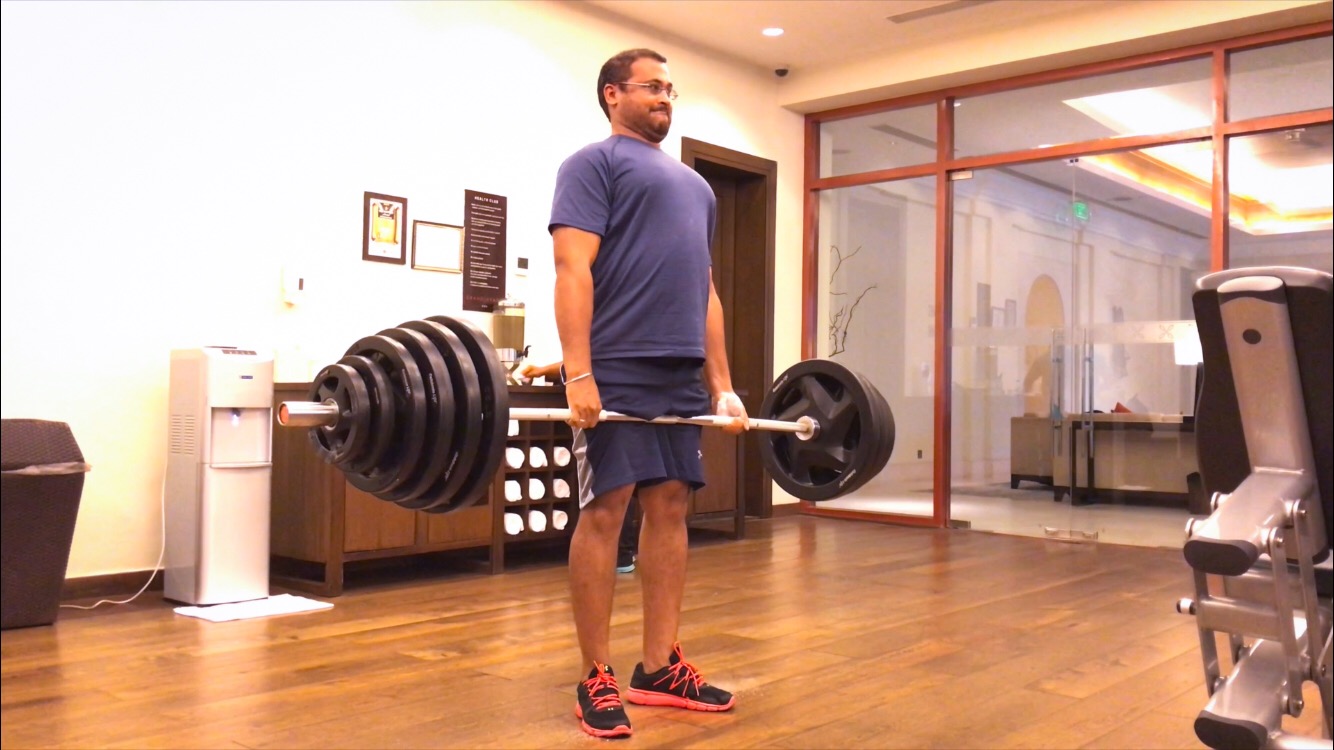Lifting heavy weights isn’t only about displaying one’s strength. It is the reflection of one’s physiological adaptation. What is this physiological adaptation I’m talking about? Well, as you know, the body is made up of various organ systems such as the nervous system, endocrine system, musculoskeletal system, etc. When an individual stresses the body with any physical activity, whether it’s strength training, running, cycling, or playing a sport, etc, all the organ systems respond to the physical stress that’s laid upon them. That means it is not just the skeletal-muscle response to the physical stress but also that of the heart, the blood vessels, the connective tissues, the hormones, etc.
Now let’s understand how physiological adaptation occurs in a progressively lifting heavy weights setting, using my client Venkat’s 180 kilograms deadlift as an example. You can watch the video attached to this article. In the beginning of our deadlift program there was a weight (50 kgs) that was within his lifting capacity without much effort. At this point his organ systems could take only that much stress; any more stress than that would disrupt the physiological homeostasis (balance). However, for all living organisms to live a quality life, life-long physical stress is important. Our organ systems deteriorate at a greater pace in the absence of physical stress as we age. However, we must also make sure that the disruption of homeostasis is only marginal because excessive physical stress leads to inadequate recovery resulting in detrimental effects on long term health.
To understand how this disruption of physiological homeostasis works, let’s move forward with our example of Venkat’s adaptation to a deadlift weight of 180 kilograms. To disrupt homeostasis we had to increase the weight on the bar from his initial effortless deadlift by a fraction and recover from that disruption. This increase in weight therefore marginally increased the blood pressure, marginally increased the load on the bones and marginally increased the stress on the overall organs. And since the increase in load was made by just a fraction from his initial lift, it was well within his body’s capacity to recover from that load. Note that all physical activities increase blood pressure, but don’t cause problems unless the increase is exceptionally greater than the individual’s ability to adapt to that particular physical activity.
This process of incremental increase in the weight on the bar resulted in stressing the organ systems only marginally. And since the increase in weight on the bar was marginal, this led to an easy recovery from that particular weight, and this process eventually resulted in adaptation. Putting this process on a continuum led to adaption of all his organ systems to a distinct weight of 180 kilograms deadlift from his initial lifting weight of 50 kilograms. That’s an increase of 130 kilograms on the barbell. In short, we disrupted his homeostasis only as much as the body could easily recover from at regular intervals and that resulted in increased physical strength, supported by all the organ systems.
High level of adaption of a heavy weight such as 180 kilograms deadlift decreases the human organ systems’ limitations to daily life stressors and hence makes us not just capable of handling high level of stress on our musculoskeletal system but also our heart muscle, smooth muscles of our organs, blood pressure, blood glucose and all other responses of our physiological (also psychological) system. This is what I meant by… “Lifting heavy weights isn’t only about displaying one’s strength. It is the reflection of one’s physiological adaptation”.
In the follow-up to this article I will make a case for scientifically programmed strength training (gradually lifting heavy weights) as the most optimal physical training for health, sports, general fitness, pain rehabilitation, etc.
Hope this article brings value to your physical training program. Those who think this article may help somebody you know, please share it with them. If you have any questions or want to understand how to train efficiently, drop me an email or meet me at the gym. I’ll be glad to guide you and answer your questions. Thank you for reading.

1 thought on “Lifting heavy weights isn’t only about displaying one’s strength. It is the reflection of one’s physiological adaptation.”
Comments are closed.